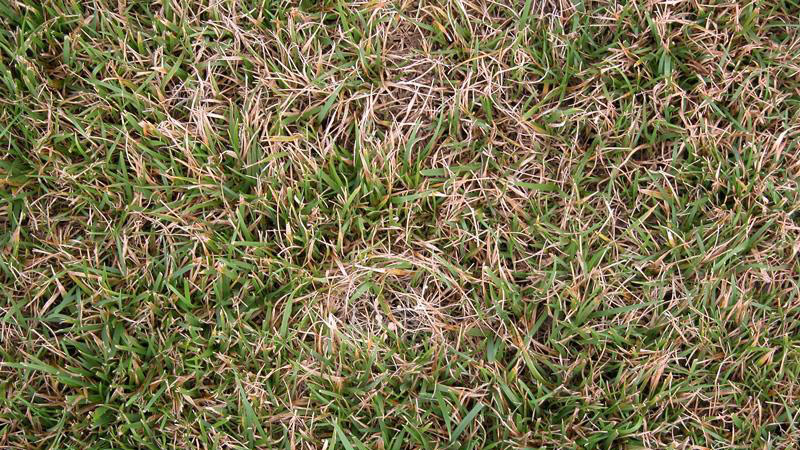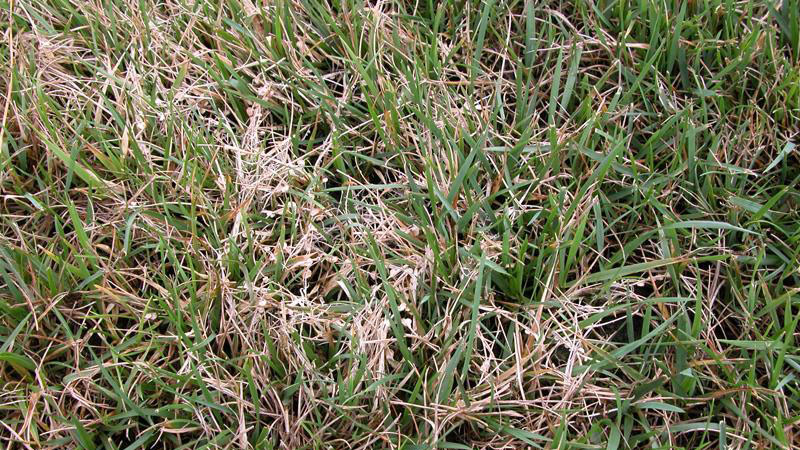White Patch in Turf
en Español / em Português
El inglés es el idioma de control de esta página. En la medida en que haya algún conflicto entre la traducción al inglés y la traducción, el inglés prevalece.
Al hacer clic en el enlace de traducción se activa un servicio de traducción gratuito para convertir la página al español. Al igual que con cualquier traducción por Internet, la conversión no es sensible al contexto y puede que no traduzca el texto en su significado original. NC State Extension no garantiza la exactitud del texto traducido. Por favor, tenga en cuenta que algunas aplicaciones y/o servicios pueden no funcionar como se espera cuando se traducen.
Português
Inglês é o idioma de controle desta página. Na medida que haja algum conflito entre o texto original em Inglês e a tradução, o Inglês prevalece.
Ao clicar no link de tradução, um serviço gratuito de tradução será ativado para converter a página para o Português. Como em qualquer tradução pela internet, a conversão não é sensivel ao contexto e pode não ocorrer a tradução para o significado orginal. O serviço de Extensão da Carolina do Norte (NC State Extension) não garante a exatidão do texto traduzido. Por favor, observe que algumas funções ou serviços podem não funcionar como esperado após a tradução.
English
English is the controlling language of this page. To the extent there is any conflict between the English text and the translation, English controls.
Clicking on the translation link activates a free translation service to convert the page to Spanish. As with any Internet translation, the conversion is not context-sensitive and may not translate the text to its original meaning. NC State Extension does not guarantee the accuracy of the translated text. Please note that some applications and/or services may not function as expected when translated.
Collapse ▲Symptoms
White patch, also known as white blight, is primarily a disease of tall fescue in transition zone areas. The disease develops during periods of hot, humid weather and is most damaging to new plantings in the first year or two after establishment. Symptoms appear in white circles or patches up to 1 foot in diameter, and small white or tan mushrooms (about 1⁄4 inch in diameter) are produced directly on the blighted leaves. White patch is most damaging in tall fescue that is under-irrigated or deficient in nitrogen or other essential nutrients.
Development Factors
The white patch pathogen is most active during the summer when humidity is high and night temperatures are above 70°F. Stands of tall fescue that are under-fertilized, under-irrigated, heavily trafficked, or under other forms of stress are most prone to this disease.
Cultural Control
Apply 3 to 4 lbs. N per 1000 square feet to tall fescue landscapes annually to maintain optimal growth and density. Approximately 2⁄3 of this nitrogen should be applied in the fall, with the remainder applied in the spring prior to May 1. Perform an annual soil test to ensure that soil pH and nutrient levels are optimal. Mow tall fescue regularly to a height of 3 to 3.5 inches. Use deep and infrequent irrigation to prevent drought stress and minimize leaf wetness periods. This is done by irrigating for a sufficient period of time to wet the entire root zone, then re-applying only when the root zone has become dry and the turf begins to show signs of mild drought stress.
Chemical Control
Infestations of white patch are rarely severe enough to warrant fungicide applications. No fungicides are labeled for control of white patch, but azoxystrobin (Heritage) and flutolanil (ProStar or Pedigree) have shown some activity against the disease.
Species Data
- HOST SPECIES
- tall fescue
- MONTHS WITH SYMPTOMS
- May to September
- STAND SYMPTOMS
- FOLIAR SYMPTOMS LOCATION / SHAPE
- blighting of entire leaves
- FOLIAR SYMPTOMS COLOR
- white
- ROOT / CROWN SYMPTOMS
- none
- FUNGAL SIGNS
- mushrooms








